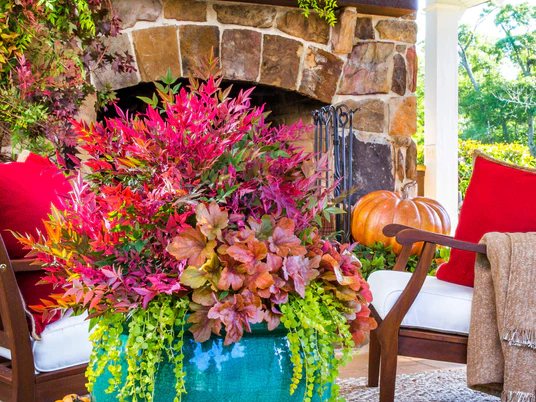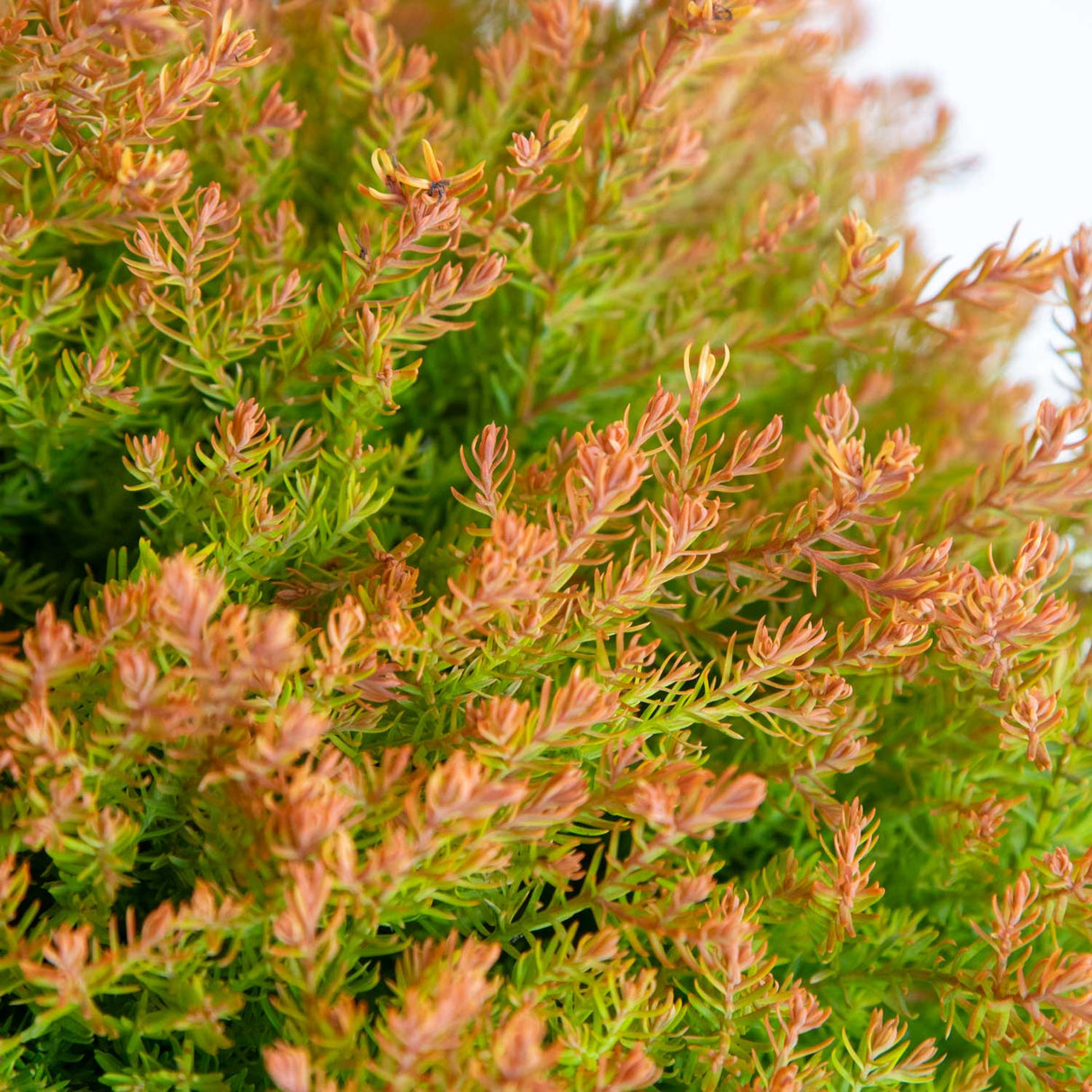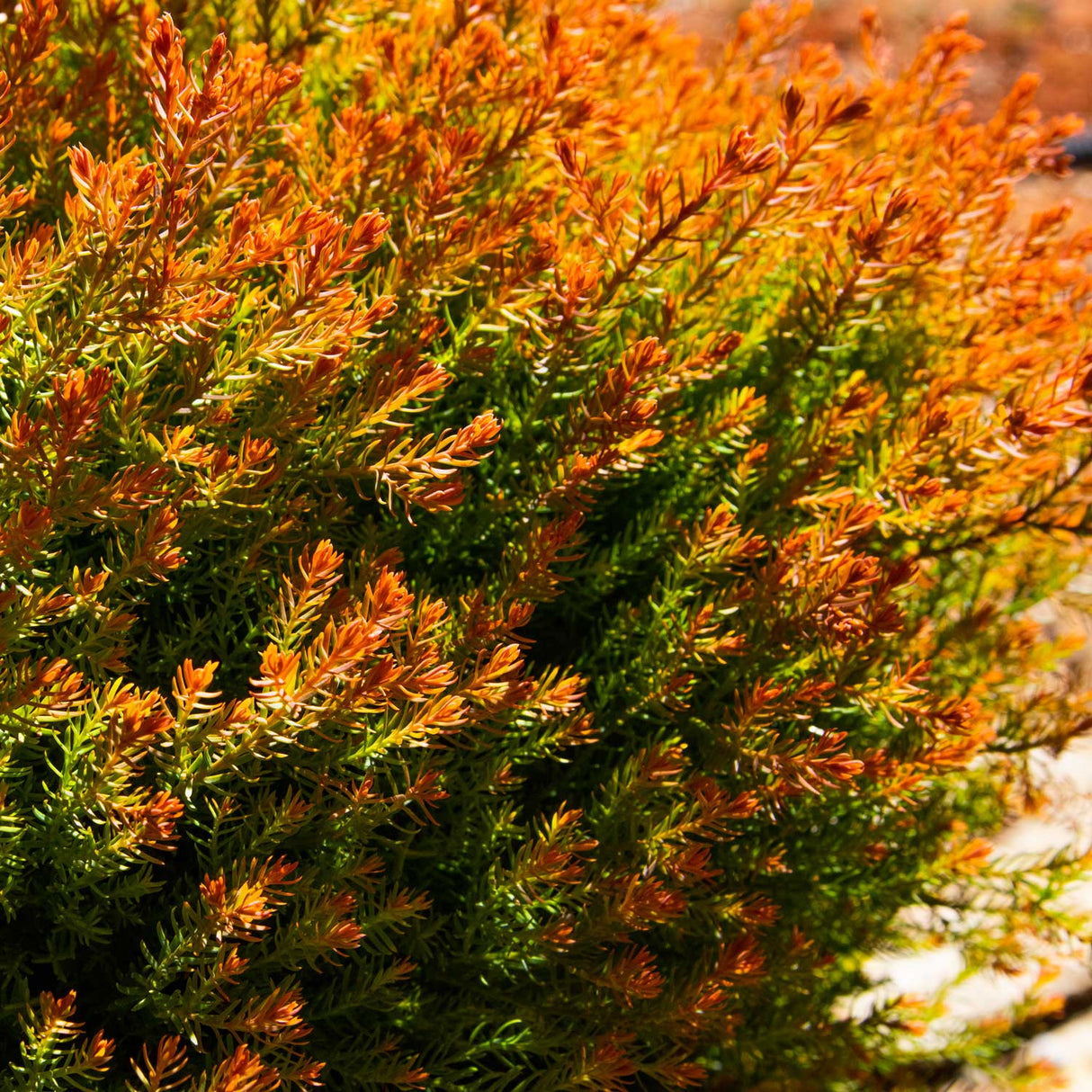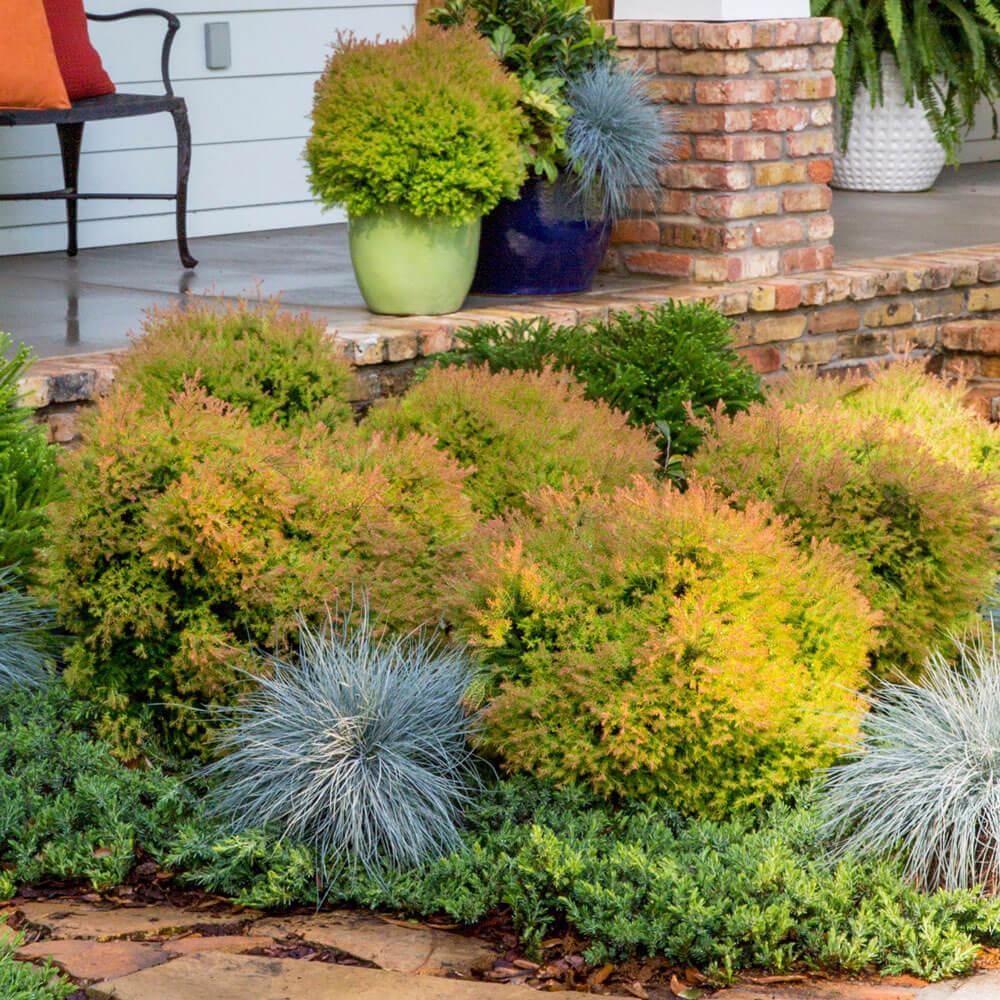Fire Chief Arborvitae (Thuja)
Fire Chief Arborvitae (Thuja) - 2.5 Quart is backordered and will ship as soon as it is back in stock.
Description
Description
The phenomenal new Fire Chief™ Thuja from the Southern Living Plant Collection is the type of plant that leads people to ask “What is that plant?!” These exceptionally uniform shrubs make an almost perfect globe shape that requires no pruning. The Fire Chief’s eye-popping display of red-orange on the tips of its branches and lime-green on the inside appears almost other-worldly. Fully mature plants average 3'x3' as this shrub is of the dwarf variety.
As the wind shakes these shrubs, the orange tips appear to shimmer on top of the chartreuse green foliage underneath, creating an optical illusion effect. This Thuja is perfect for those looking for a year-round color interest, as its brilliantly golden spring foliage will transition to a deep scarlet red through fall and winter. Whether used as a border, accent, hedge, or mass planting in the landscape or container garden, the Fire Chief refuses to cease turning heads all year long.
Fire Chief Arborvitae Care
The Thuja Occidentalis is a terrific evergreen shrub that makes for a wonderful addition to any landscape. USDA zones 5a - 8b provides the Fire Chief arborvitae the ideal climate to thrive. In addition to being a dwarf this slow growing shrub remains a manageable size and retains a natural globular shape. Use the Fire Chief Arborvitae as part of the foundation planting around your house. It can be planted as a single specimen or as a group of three or even more. It also works well in your flowerbeds, or in shrub beds all around your garden, proving year round interest.
Planting Fire Chief Arborvitae
The striking colors of the Fire Chief foliage is the main attraction of this plant so you will want to be sure you provide it with sufficient sunlight to facilitate the colorful growth. These shrubs thrive in full sunlight during morning sun and in the evenings prefer dappled shade areas.
Watering Your Fire Chief Arborvitae
Once you are ready to place your shrub in the ground remove it from its shipping pot and water deeply to settle. During the first growing season water 2-3 times per week to develop healthy roots. During the following seasons watering can be reduced as this is a water wise plant and grows to be quite drought tolerant.
Fire Chief Arborvitae Soil
Being such an easy and care free plant it should be no surprise to you that it that are not picky about soil types. They are easily grown in several soil types including those consisting of loam, clay and chalk. Although capable of growing in almost any soil type it does prefer well draining, but moist soil.
Common Fire Chief Arborvitae Questions
How should I prune my Fire Chief Arborvitae?
As stated numerous times this shrub is low maintenance and due to that it requires no pruning. If you do choose to prune do so after 2 years of growth so that your are sure not impede any future growth. Although naturally rounded and compact its possible that it may become a bit "wild" so a light prune is not an issue.
Why is my arborvitae turning brown?
It is both easy and common for new plants to be overwatered leading to a number of issues. The best way to stop your Fire Chief from turning brown is to minimize improper watering. On the other side... it is also possible that it is receiving too little water. For the gleaming green, orange and red foliage that it is known for proper watering and sunlight exposure is imperative.
Care & Use
Care & Use
Spacing Recommendations
Spacing Recommendations
-
Scientific Name
-
Hardiness Zone5, 6, 7, 8
-
Sun ExposureFull Sun to Part Shade
-
Evergreen or DeciduousEvergreen
-
FeaturesDwarf, Sun Loving, Winter / Fall Foliage Color
-
Feature ColorGreen, Orange
-
UsesBorder, Container, Hedge, Mass Planting
-
Water NeedsMedium
-
Bloom SeasonNone
Growing Zones : 5, 6, 7, and 8


Southern Living Plants











